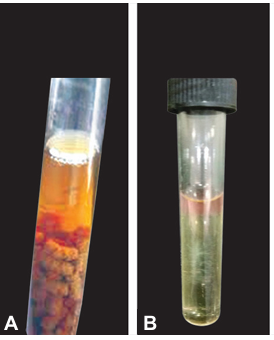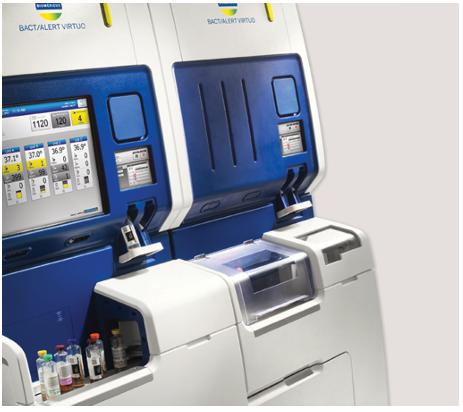
Automated Blood Culture Techniques
 المؤلف:
APURBA S. SASTRY , SANDHYA BHAT
المؤلف:
APURBA S. SASTRY , SANDHYA BHAT
 المصدر:
Essentials Of Medical Microbiology 2021
المصدر:
Essentials Of Medical Microbiology 2021
 الجزء والصفحة:
3rd edition , p32-33
الجزء والصفحة:
3rd edition , p32-33
 2025-02-18
2025-02-18
 1150
1150
Automated blood culture techniques have been in use since last two decades. They are revolutionary, offer several advantages over conventional blood cultures.
Continuous automated monitoring:
Following inoculation, the culture bottles are loaded inside the automated culture system
- The incubated bottles are periodically tilted automatically every 10 minutes, which allows mixing of blood with broth which fastens the recovery
- Bottles are periodically monitored for the microbial growth once in every 10 minutes by the instrument. Once positive for microbial growth, the instrument gives a signal (producing beep or color change on the screen).
Composition:
Automated blood culture bottles contain:
- Tryptic soy broth and/or brain heart infusion broth (as enriched media) added with
- Polymeric resin beads which adsorb and neutralize the antimicrobials present in blood specimen.
Specimens: In addition to blood, these bottles can also be used for culture of bone marrow, sterile body fluids such as CSF, peritoneal, pleural and synovial fluid
More sensitive: It gives a higher yield of positive cultures from clinical specimens
Rapid: It takes less time than conventional methods Less labor intensive, as fully-automated.
automated Systems
There are three automated systems commercially available.
1- BacT/ALERT 3D (Figs 1 A and B): Its principle is based on colorimetric detection of growth. When bacteria multiply, they produce CO2 that increases the pH, which in turn changes the color of a blue-green sensor present at the bottom of the bottle to yellow, that is detected by colorimetry
2- BacT/ALERT VIRTUO (bioMerieux) (Fig. 2): It is an advanced form of BacT/ALERT which offers several advantages such as (i) automatic loading and unloading of bottles, (ii) faster detection of growth, (iii) can determine the volume of blood present in the bottle

FIG 1. A. Robertson’s cooked meat medium B. Thioglycollate broth

FIG2. BacT/ALERT VIRTUO automated blood culture system. Source: Department of Microbiology, JIPMER, Puducherry (with permission).
3- BACTEC (BD Diagnostics): Its principle is based on fluorometric detection of growth; use an oxygen sensitive fluorescent dye present in the medium
- In an uninoculated medium, the large amount of dissolved oxygen present in the broth quenches the fluorescent dye
- Later, actively dividing microorganisms consume the oxygen removing the quenching effect and allowing the fluorescence to be detected.
* Note: There is an automated culture system available for culture of Mycobacterium tuberculosis from various pulmonary and extrapulmonary specimens; called as Mycobacteria Growth Indicator Tube (MGIT). This works on fluorometric principle of detection, similar to BACTEC.
Disadvantages
Automated culture methods do have several disadvantages like (1) high cost of the instrument and culture bottles, (2) inability to observe the colony morphology as liquid medium is used.
 الاكثر قراءة في التحليلات المرضية
الاكثر قراءة في التحليلات المرضية
 اخر الاخبار
اخر الاخبار
اخبار العتبة العباسية المقدسة


